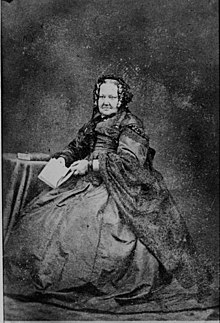
Albany is a port city in the Great Southern region in the Australian state of Western Australia, 418 kilometres (260 mi) southeast of Perth, the state capital. The city centre is at the northern edge of Princess Royal Harbour, which is a part of King George Sound. The central business district is bounded by Mount Clarence to the east and Mount Melville to the west. The city is in the local government area of the City of Albany. While it is the oldest colonial, although not European, settlement in Western Australia—predating Perth and Fremantle by over two years—it was a semi-exclave of New South Wales for over four years until it was made part of the Swan River Colony.

Admiral Sir James Stirling was a British naval officer and colonial administrator. His enthusiasm and persistence persuaded the British Government to establish the Swan River Colony and he became the first Governor and Commander-in-Chief of Western Australia. In 1854, when Commander-in-Chief, East Indies and China Station, Stirling on his own initiative signed Britain's first Anglo-Japanese Friendship Treaty. Throughout his career Stirling showed considerable diplomatic skill and was selected for a number of sensitive missions. Paradoxically, this was not reflected in his personal dealings with officialdom and his hopes for preferment received many rebuffs. Stirling also personally led the attack in Western Australia on a group of approximately seventy Bindjareb men, women and children now known as the Pinjarra massacre.

Armadale is a suburb of Perth within the City of Armadale, located on the south-eastern edge of the Perth metropolitan region. The major junction of the South Western and Albany Highways, which connect Perth with the South West and Great Southern regions of Western Australia respectively, is located within the suburb. It is also the terminus of the Armadale railway line, one of five major railway lines to service Perth.

Mathew Blagden Hale, very frequently spelled "Matthew", was the first Anglican bishop of Perth and then the Anglican bishop of Brisbane.
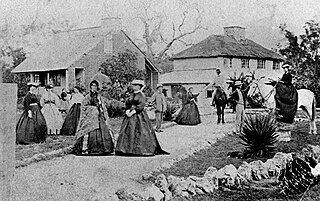
The Bussell family were a family of early settlers in colonial Western Australia. The four brothers John, Joseph Vernon, Alfred and Charles emigrated from England on Warrior, arriving at Fremantle on 12 March 1830. Lenox, Frances and Elizabeth arrived at Fremantle on Cygnet on 27 January 1833, and Mrs Frances Louisa and Mary arrived at Albany on 19 June 1834.

York is the oldest inland town in Western Australia, situated on the Avon River, 97 kilometres (60 mi) east of Perth in the Wheatbelt, on Ballardong Nyoongar land, and is the seat of the Shire of York.
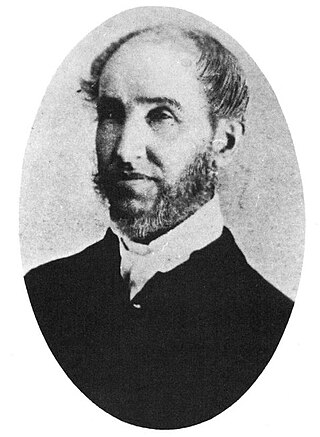
William Mitchell was a Church of England priest who was the second ordained person, after Louis Giustiniani, to provide religious services in the Swan Valley area of the Swan River Colony. He worked in the Swan Parish for over 20 years before moving to Perth to take up a position working with convicts and prisoners in the Perth Gaol in Beaufort Street.

Bessie Mabel Rischbieth, was an influential and early Australian feminist and social activist. A leading or founding member of many social reform groups, such as the Women's Service Guilds, The Australian Federation of Women Voters and their periodical The Dawn, she sought to establish international campaigns for social change and human rights. She is remembered for a symbolic protest against the reclamation of Mounts Bay in 1959 when she entered the river at the age of 85 and prevented the bulldozers from commencing their work.

Education in Western Australia consists of public and private schools in the state of Western Australia, including public and private universities and TAFE colleges. Public school education is supervised by the Department of Education, which forms part of the Government of Western Australia. The School Curriculum and Standards Authority is an independent statutory authority responsible for developing a curriculum and associated standards in all schools, and for ensuring standards of student achievement, and for the assessment and certification according to those standards.
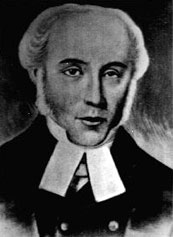
John Ramsden Wollaston was an Anglican priest who was instrumental in the establishment of the Church of England in Western Australia.
This is a timeline of Aboriginal history of Western Australia.

Gwambygine Homestead is one of the earliest colonial buildings still remaining in Western Australia. Until the death in 1998 of the last occupant, Merton Clifton, the house had the reputation of being the oldest continually occupied house in the state.

Florence Ada Fuller was a South African-born Australian artist. Originally from Port Elizabeth, Fuller migrated as a child to Melbourne with her family. There she trained with her uncle Robert Hawker Dowling and teacher Jane Sutherland and took classes at the National Gallery of Victoria Art School, becoming a professional artist in the late 1880s. In 1892 she left Australia, travelling first to South Africa, where she met and painted for Cecil Rhodes, and then on to Europe. She lived and studied there for the subsequent decade, except for a return to South Africa in 1899 to paint a portrait of Rhodes. Between 1895 and 1904 her works were exhibited at the Paris Salon and London's Royal Academy.
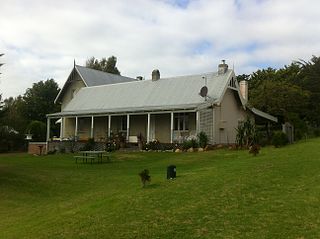
Camfield House, also referred to as Annesfield, is a conglomerate of buildings in Albany in the Great Southern region of Western Australia.
Charles Harper was Toodyay's first Anglican minister, and the first ordinand from Western Australia. While being a minister of the church was probably far from his intentions when he set sail for the Swan River Colony in 1837, his family's clerical background and his own disposition suited him well for this vocation. Harper served the Toodyay district for over 30 years, first as registrar of births, deaths and marriages, then from 1849 as an ordained minister.
John McKail was an early settler of Western Australia. He was among the first arrivals in the Swan River Colony in 1829, but in 1835 was banished to Albany after trouble with the law. In Albany, he set up as a merchant and subsequently developed interests in a number of fields. He owned hotels, invested in whaling, and exported sandalwood to Asia. McKail served in the Legislative Council from 1870 to 1871, as one of the council's first elected members.

Bessie Flower or Bessie Cameron was a Minang Noongar woman from Albany, Western Australia. Flower was educated at Annesfield, and developed a strong connection to headmistress Anne Camfield. Throughout her life she fought for Aboriginal rights and to keep families together. In 1867 Flower relocated to the Ramahyuck Mission, in Gippsland, Victoria, where she worked as a teacher.

Holy Trinity Church is a heritage-listed Anglican church on the corner of Newcastle and Pool Streets, in York, Western Australia. The church was consecrated in 1858 by the first Anglican Bishop of Perth, Mathew Blagden Hale.
Louis Giustiniani was the first missionary to the Swan River Colony. He was outspoken in defending Aboriginal Australians, but in doing so alienated the colony and was eventually removed from office. After leaving Western Australia, Giustiniani became a Minister of the Evangelical Lutheran Church in the United States.

Janet Millett (1821–1904) was an English writer about life in Western Australia in the 1860s, best known for her book An Australian Parsonage or, the Settler and the Savage in Western Australia.
